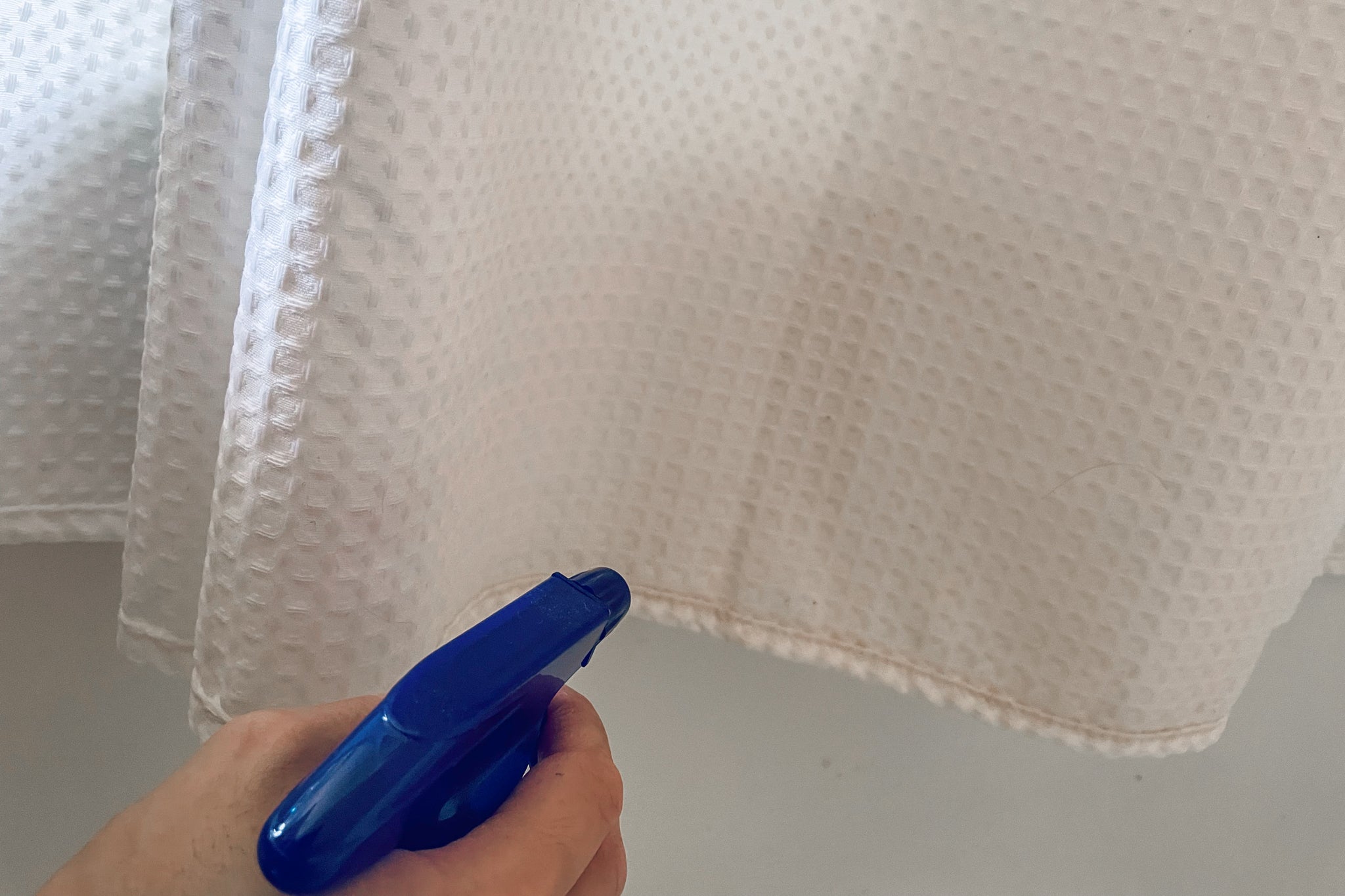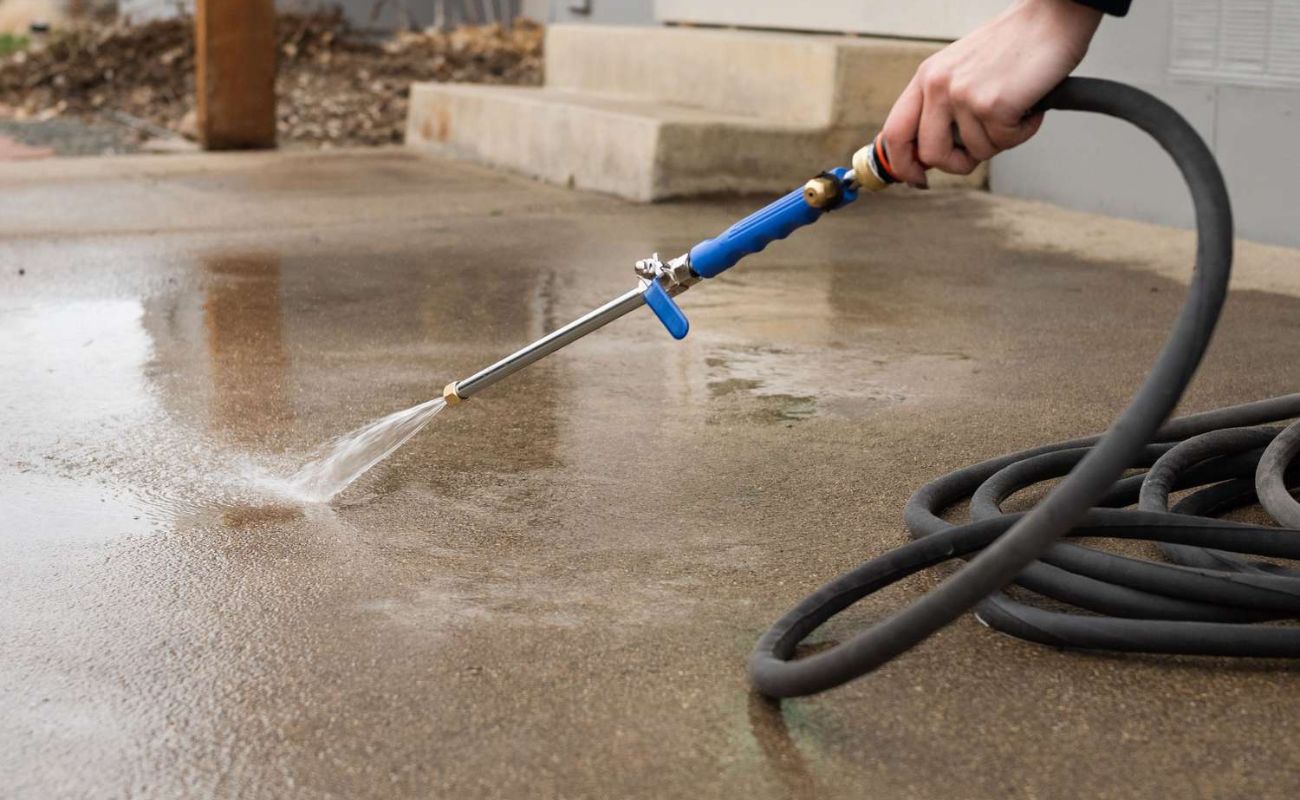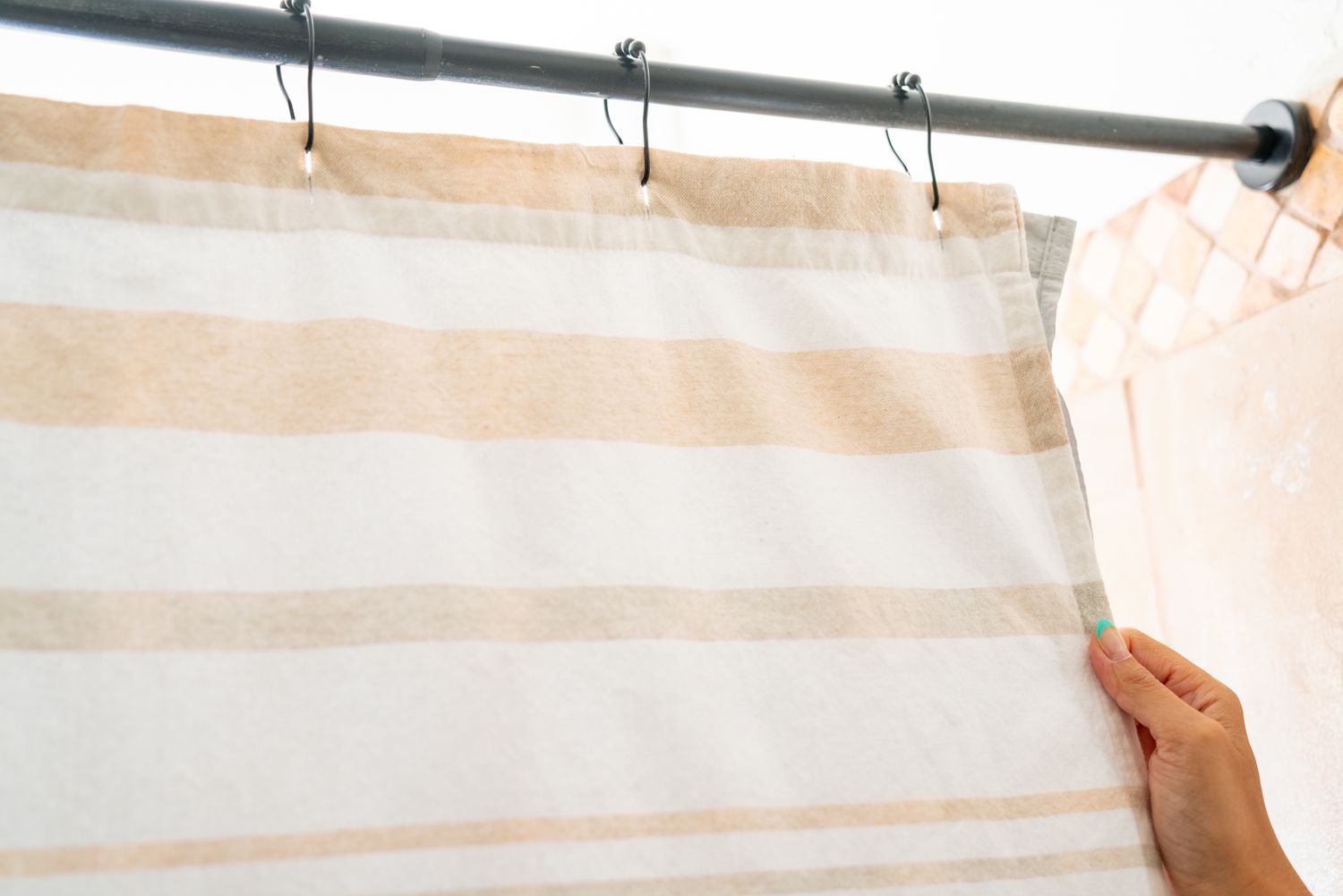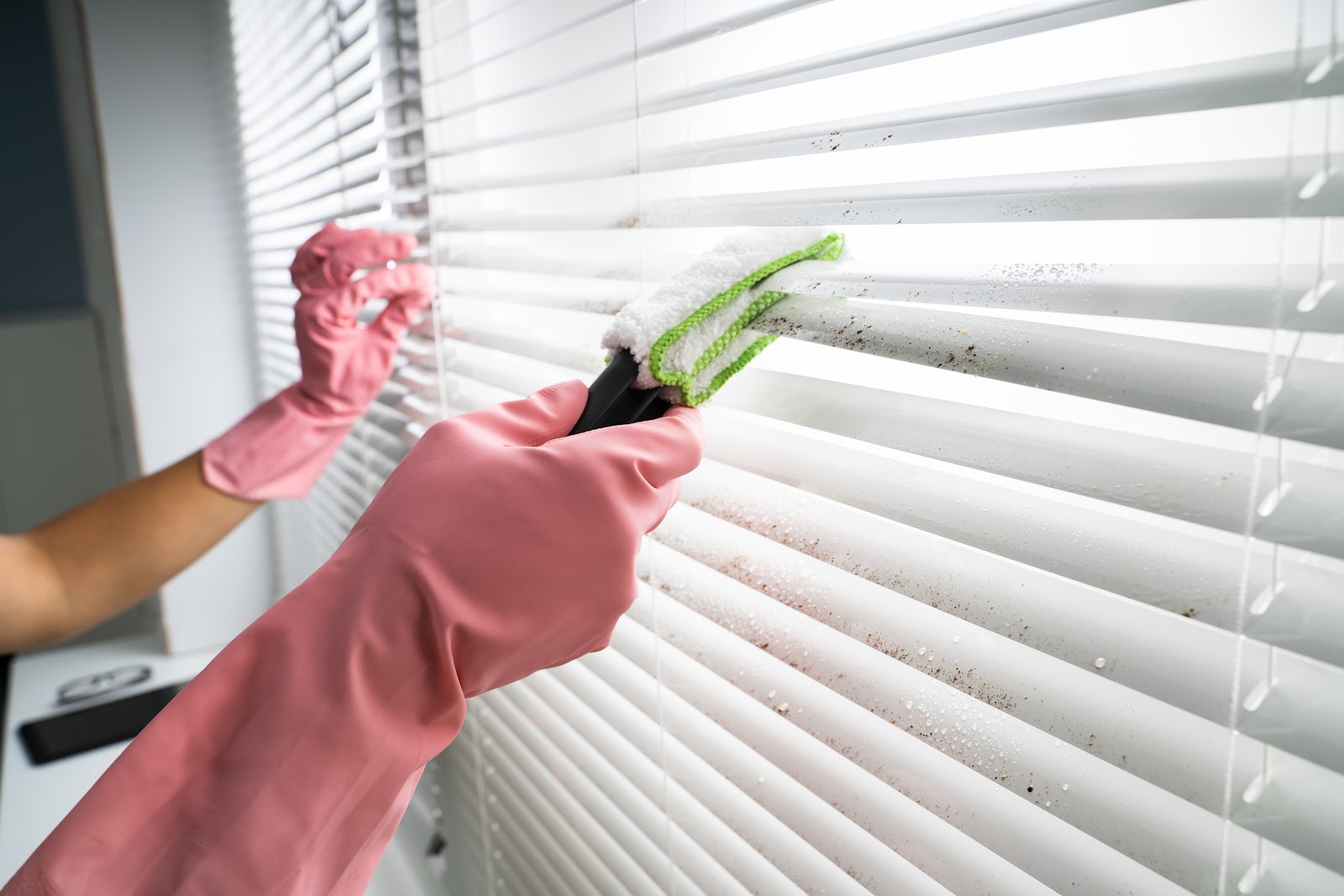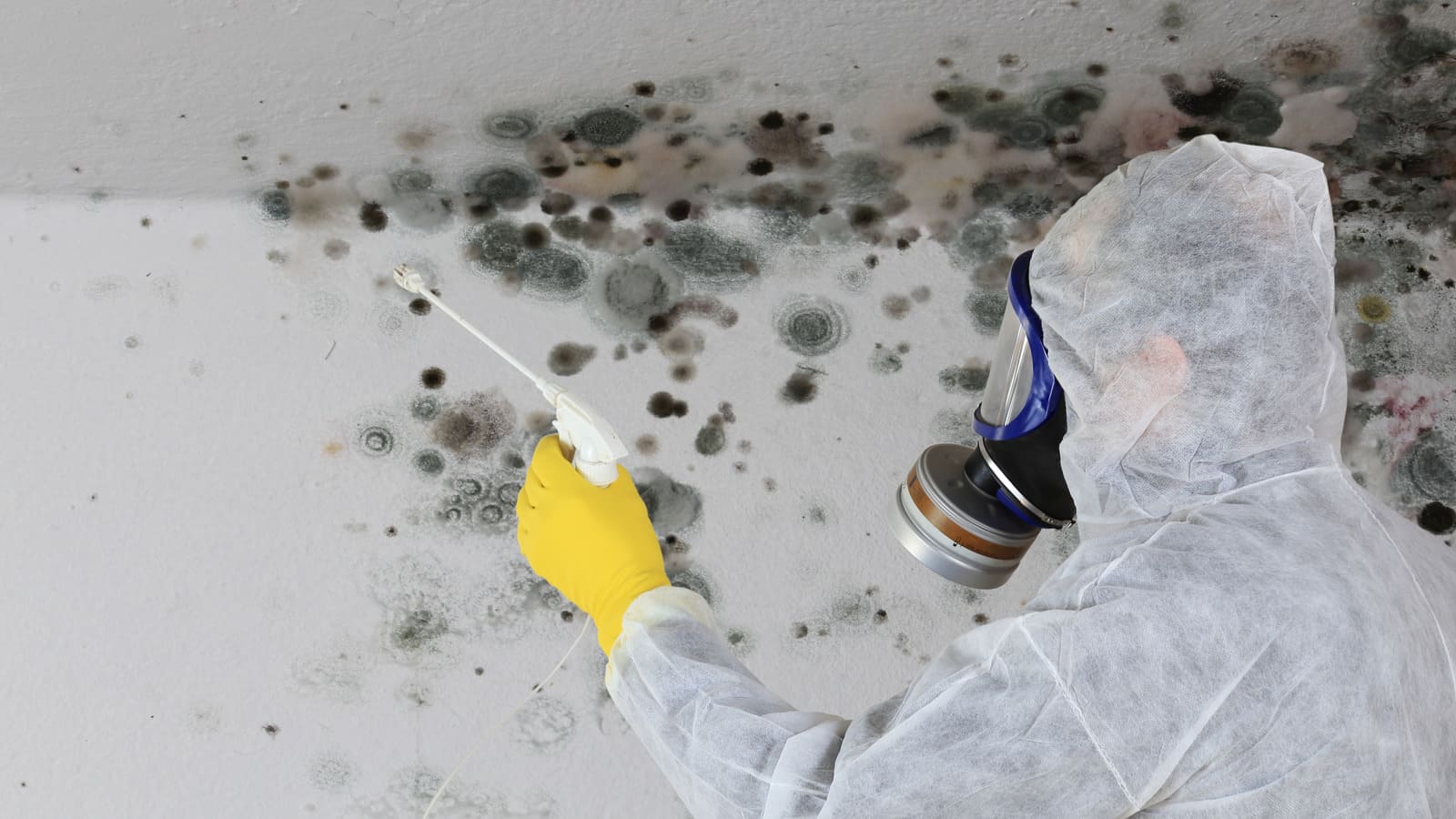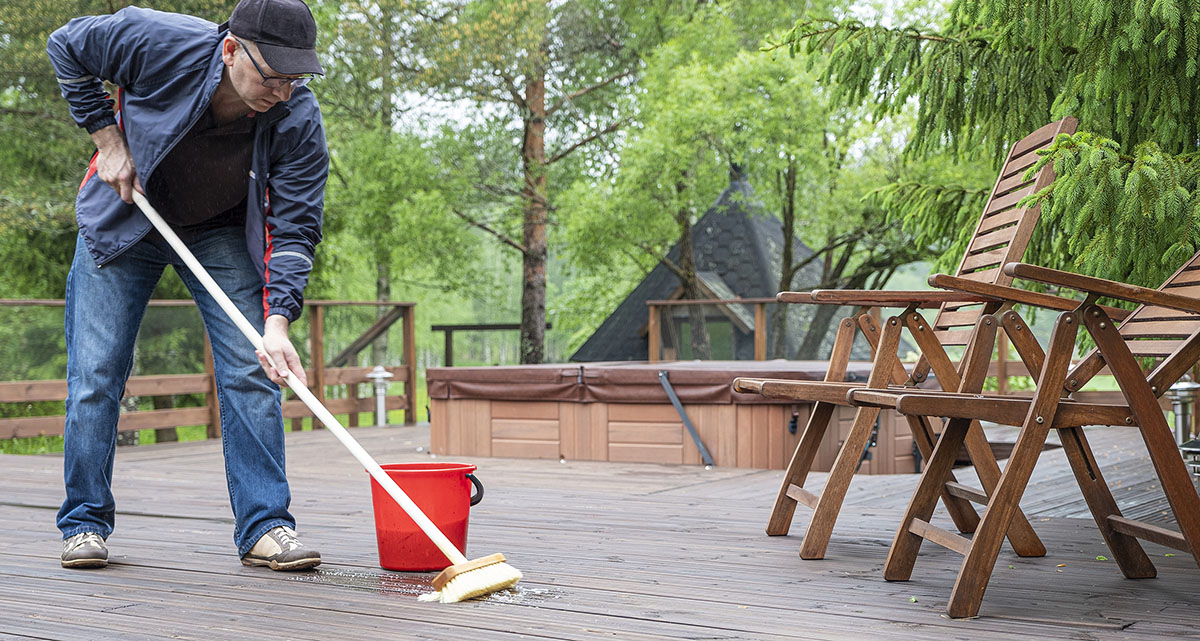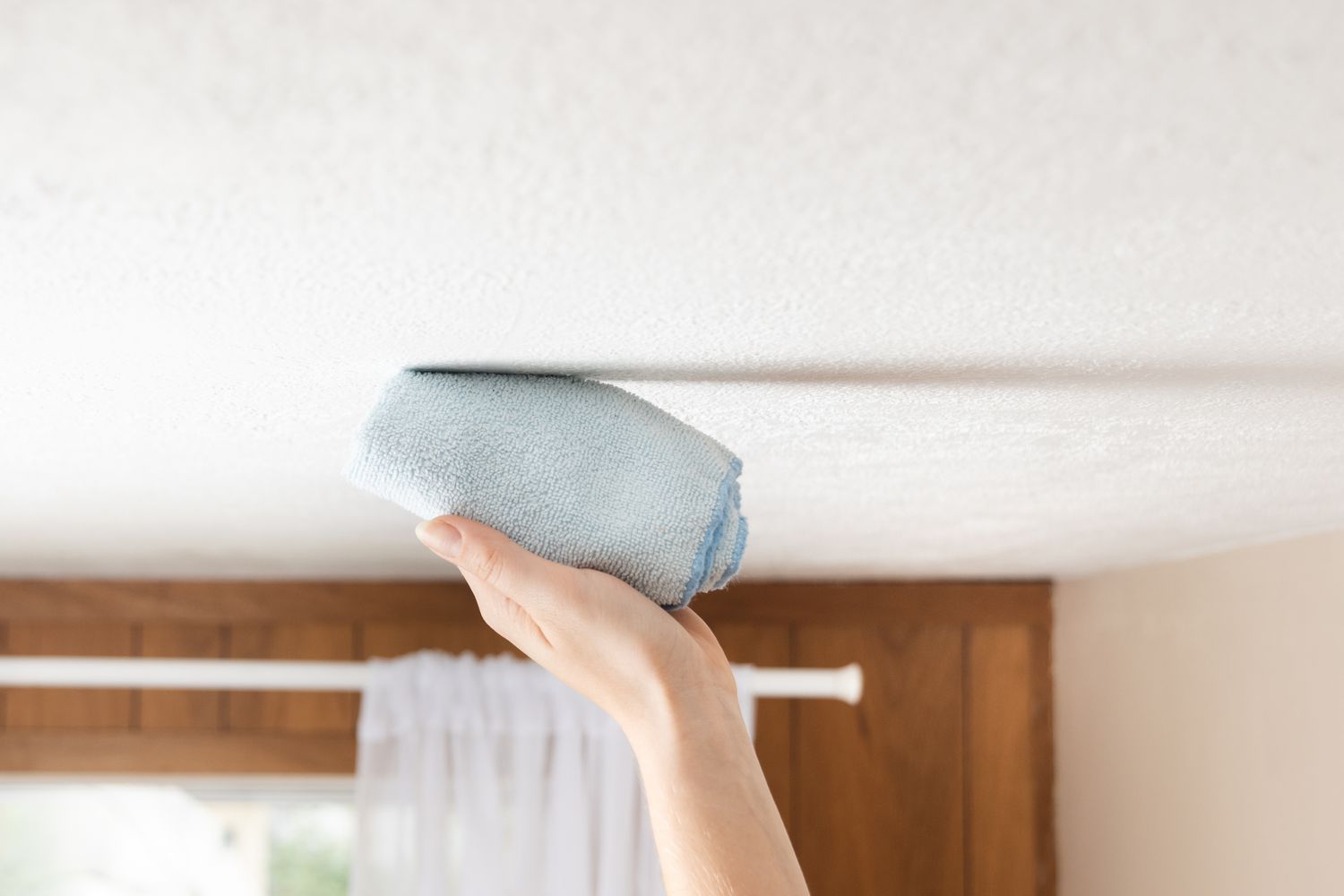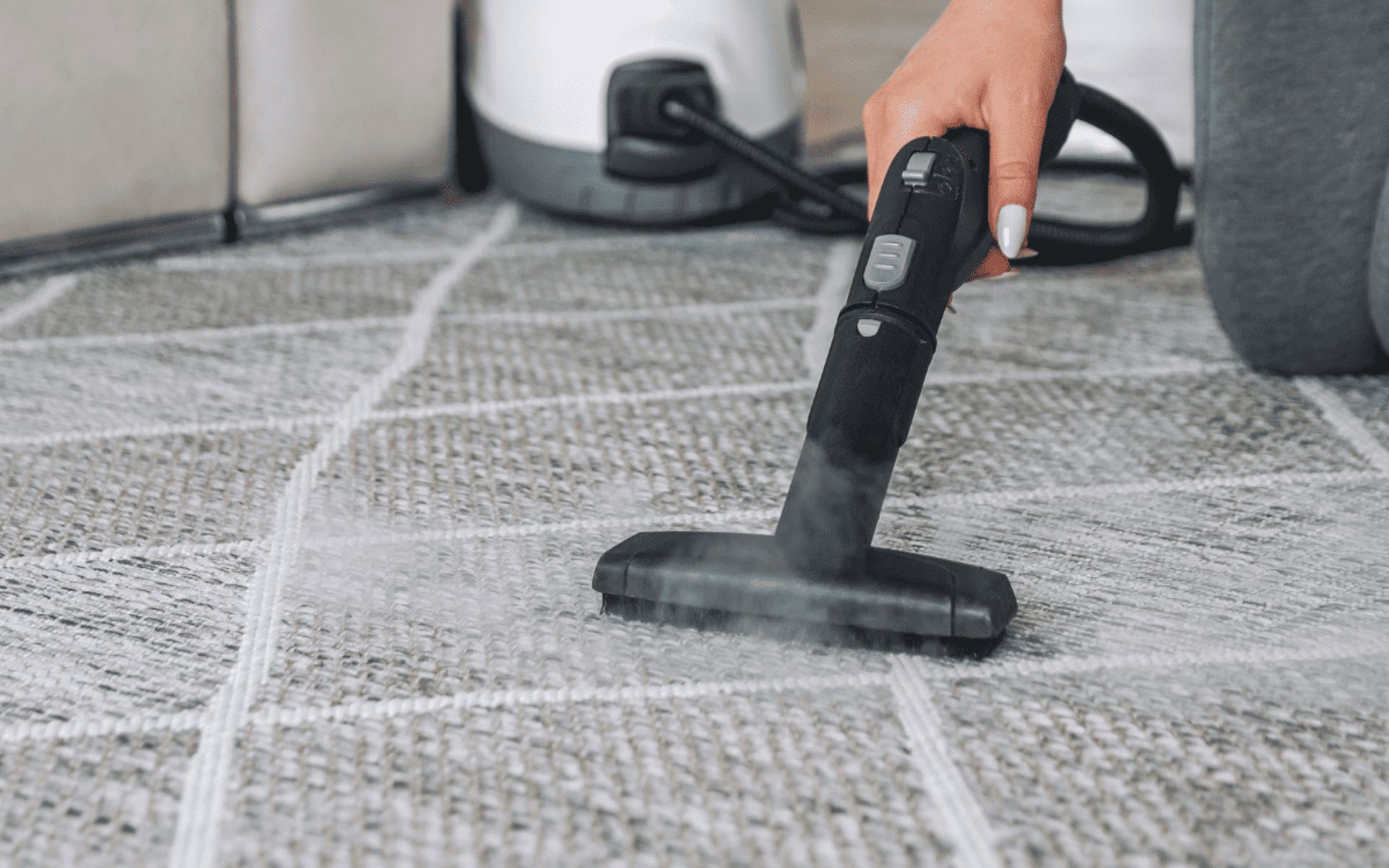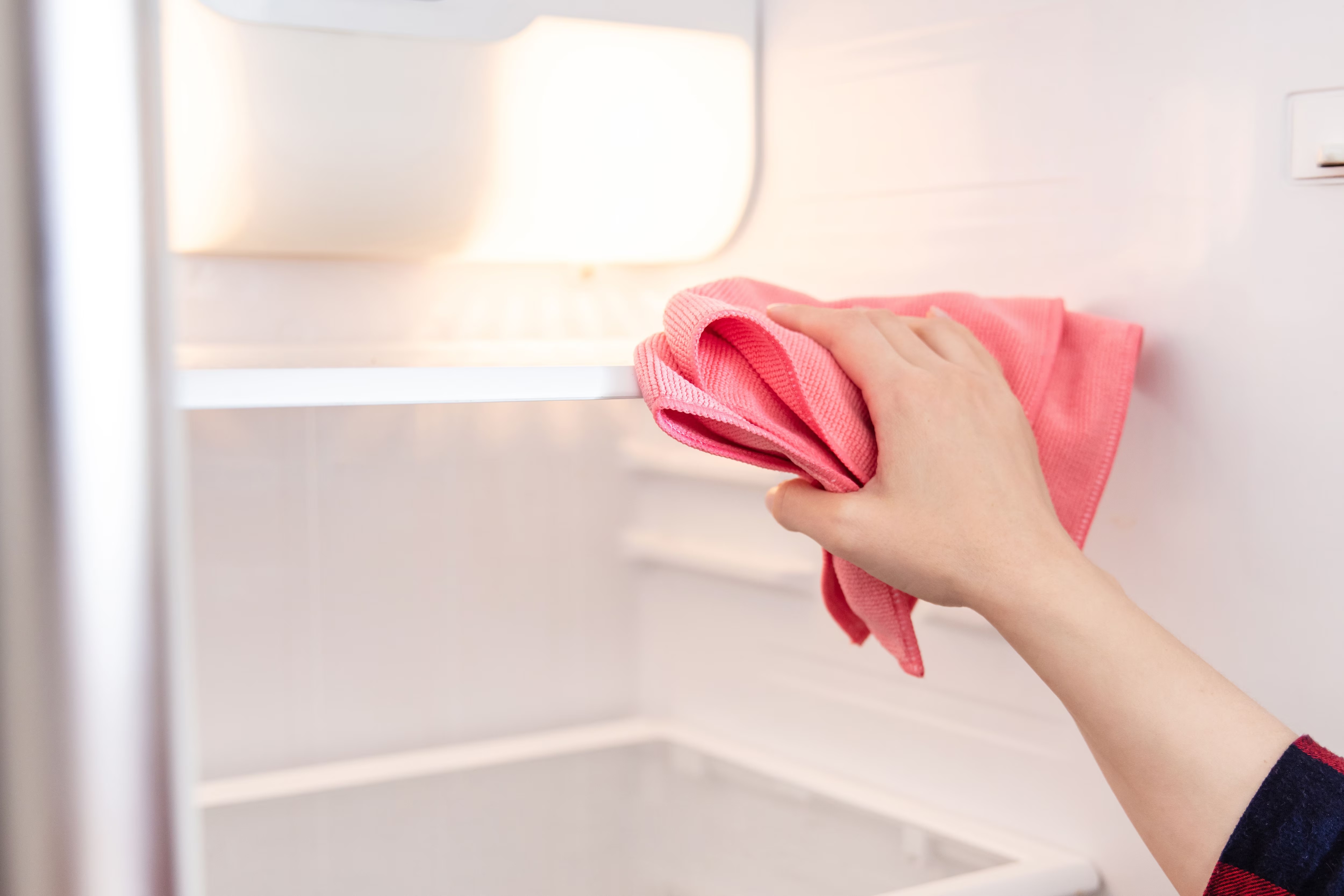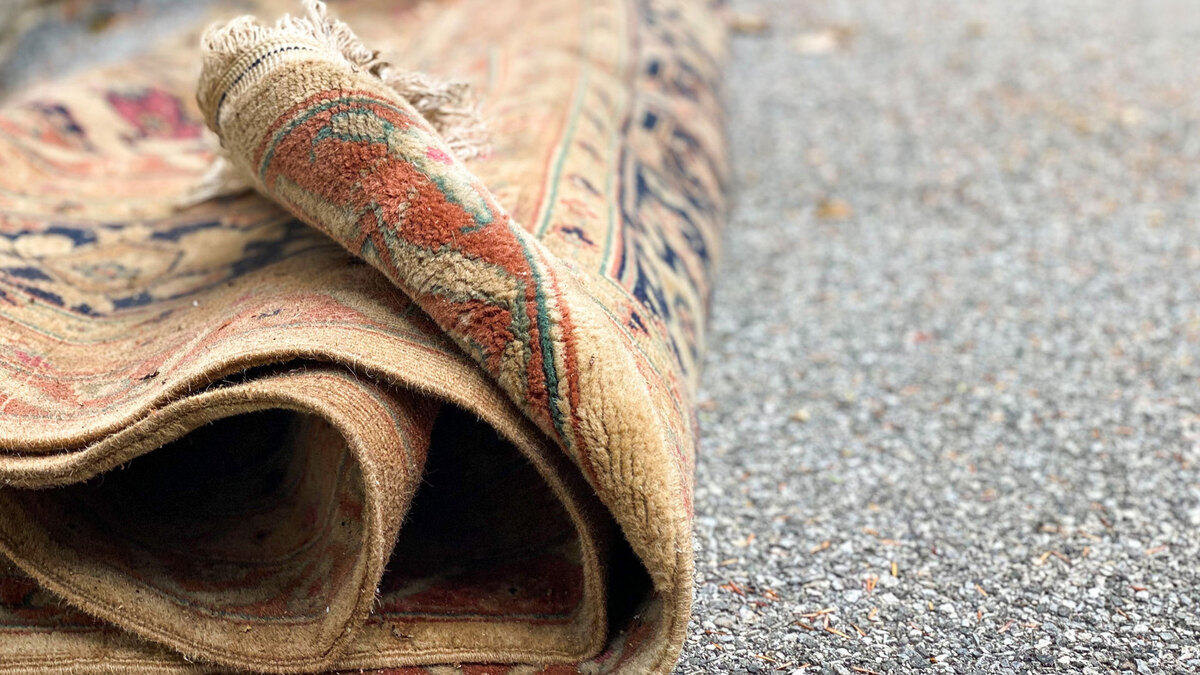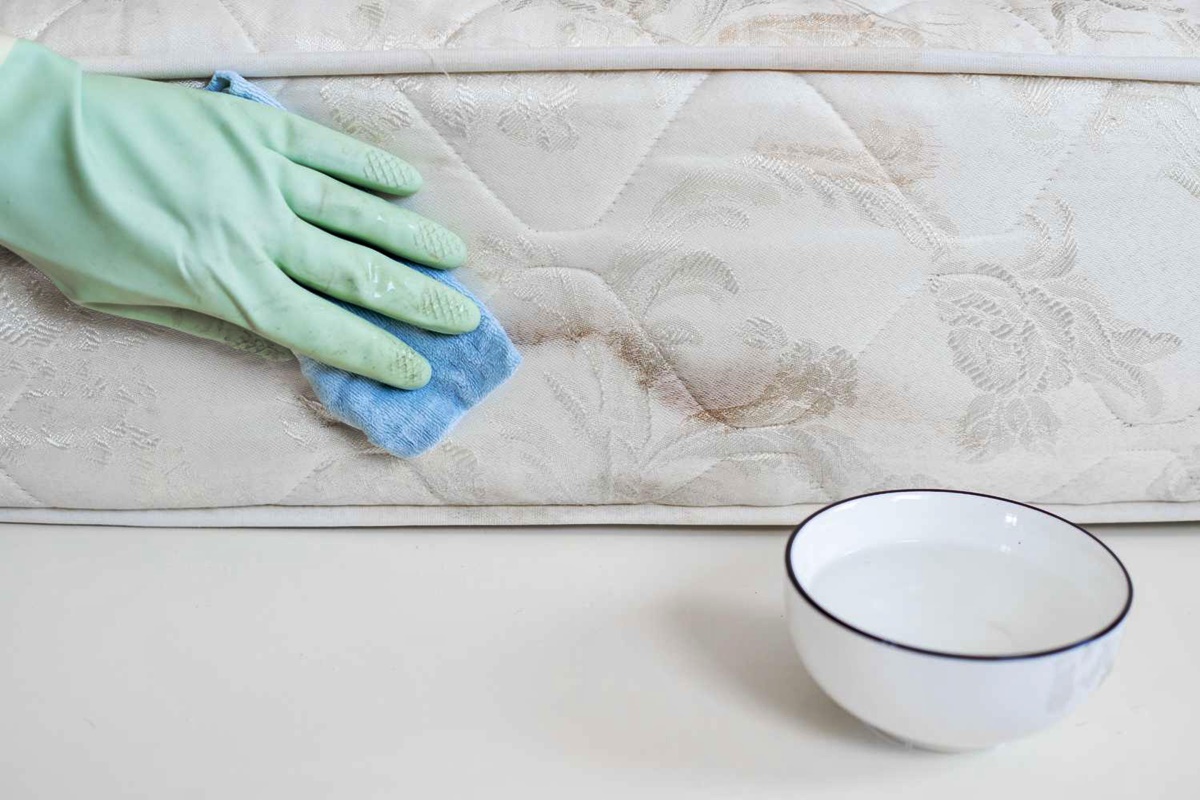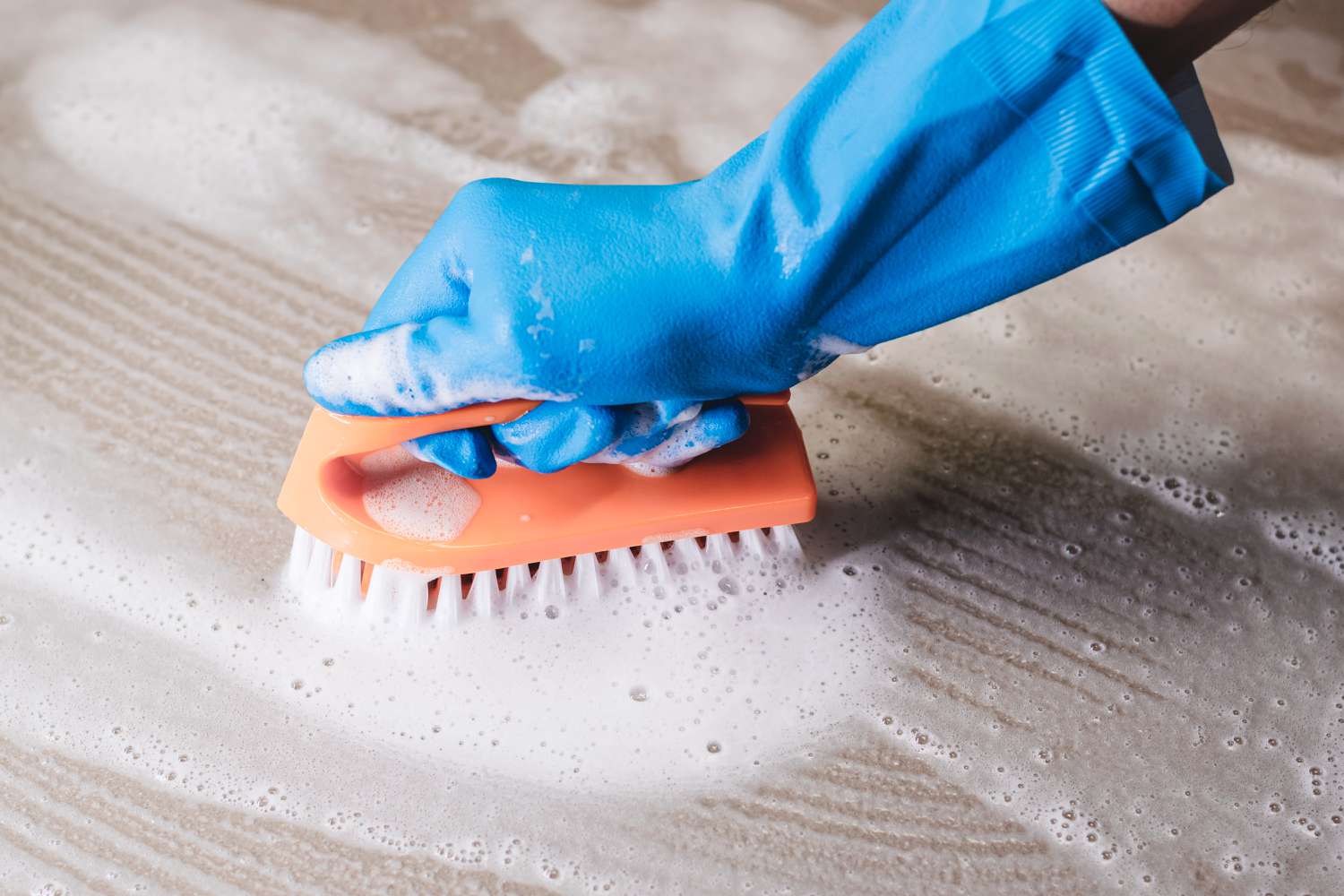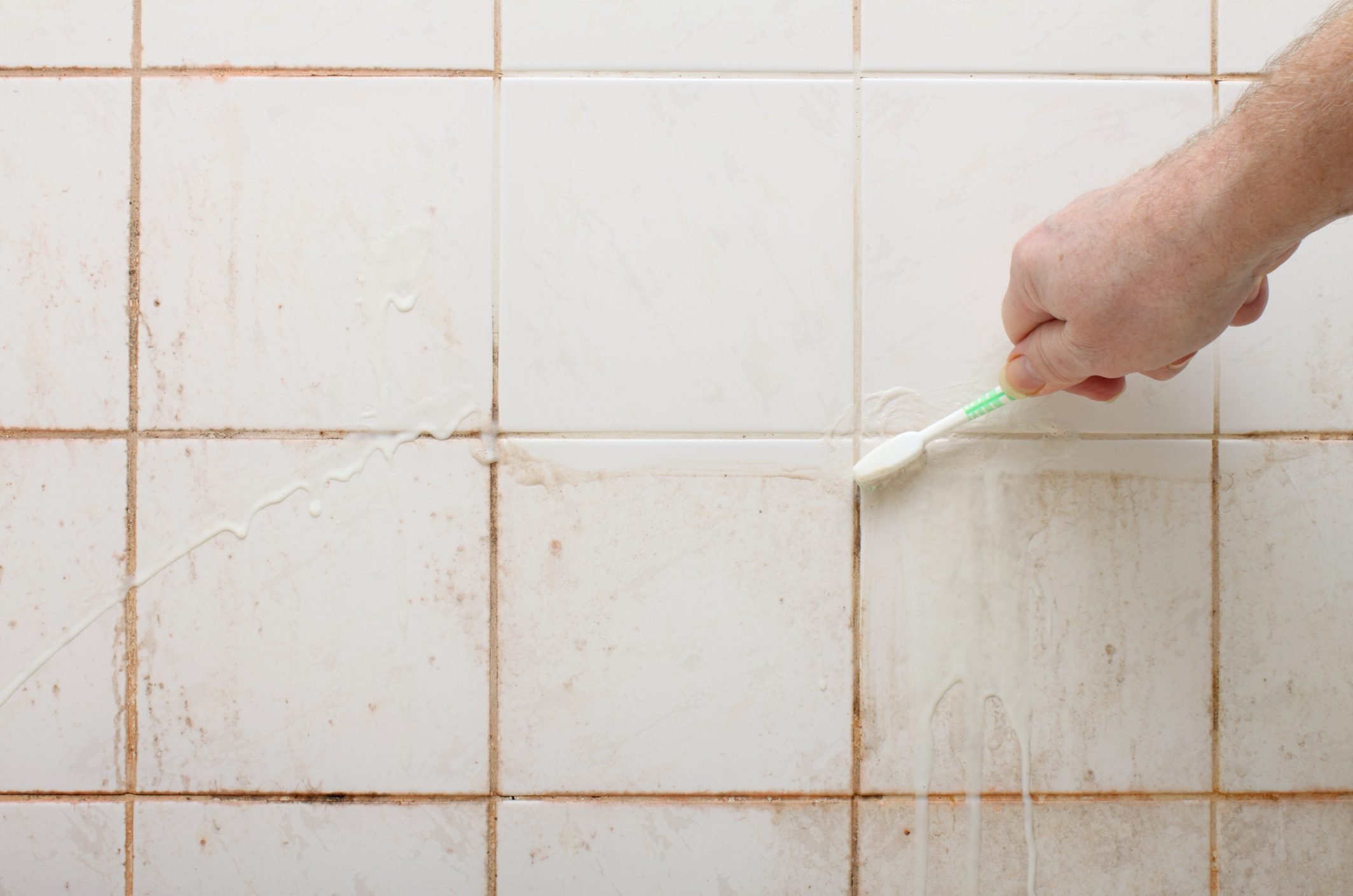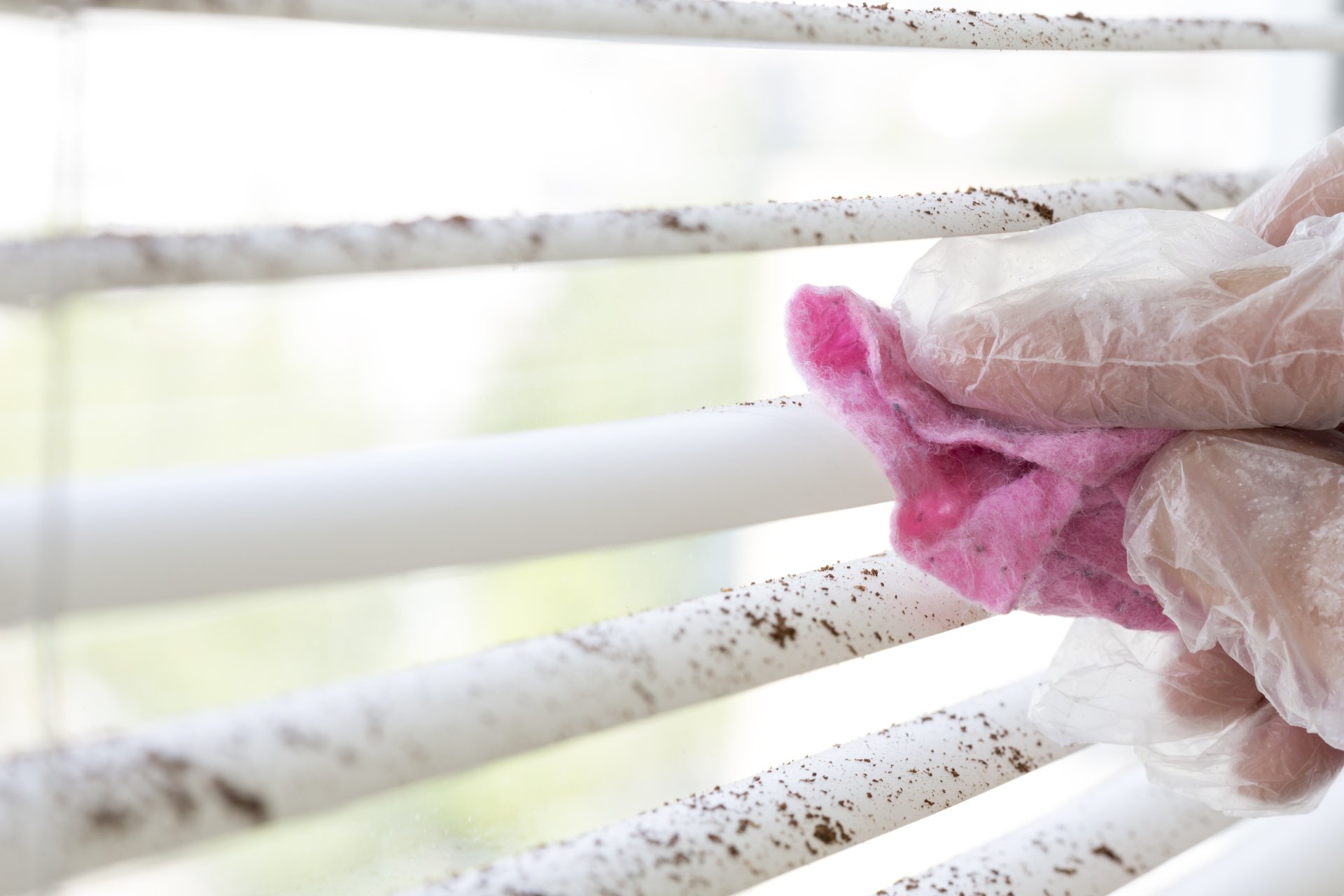

Articles
How To Clean Mold Off Blinds
Modified: January 9, 2024
Learn effective methods to clean mold off blinds in this informative article. Discover expert tips and tricks for a mold-free home.
(Many of the links in this article redirect to a specific reviewed product. Your purchase of these products through affiliate links helps to generate commission for Storables.com, at no extra cost. Learn more)
Introduction
When it comes to maintaining a clean and healthy home, addressing mold growth is crucial. Mold can not only cause structural damage and unpleasant odors but also pose serious health risks. One area of the home that is particularly susceptible to mold growth is blinds. Over time, blinds can accumulate moisture, dust, and other debris, providing the perfect breeding ground for mold.
In this article, we will delve into the methods and steps you can take to effectively clean mold off blinds and prevent its reoccurrence. From understanding the nature of mold to implementing proper cleaning techniques, we will guide you through the process, ensuring that your blinds are not only clean but also free from harmful mold.
Before we begin, it is essential to note that if you have a severe mold infestation or any concerns about your health, it is advisable to consult with a professional mold remediation service. They have the expertise and tools to handle extensive mold problems.
Now, let’s explore how to tackle mold on blinds and restore a fresh and safe environment in your home.
Key Takeaways:
- Prioritize safety by wearing protective gear, creating a containment area, and using gentle cleaning techniques to effectively remove mold from blinds. Implement preventive measures to minimize future mold growth and maintain a healthy living environment.
- Regular maintenance, proper ventilation, and proactive steps such as controlling indoor humidity levels and using mold-resistant blinds are essential in preventing mold reoccurrence on blinds. Take action to keep your blinds clean and mold-free.
Read more: How To Clean Mold Off Siding
Understanding Mold on Blinds
Mold, a type of fungus, thrives in damp and humid environments. Blinds, especially those in high-moisture areas such as bathrooms or kitchens, are susceptible to mold growth. Mold spores can easily settle on the surface of the blinds and begin to multiply, forming colonies that appear as discoloration, spots, or fuzzy patches.
It is crucial to understand that mold is not only unsightly but also poses potential health risks. Mold spores can be easily dispersed into the air and inhaled, leading to respiratory issues, allergies, or even more severe health conditions. Therefore, taking prompt action to address and remove mold from your blinds is essential.
There are various types of mold that can grow on blinds, including black mold (Stachybotrys chartarum), which is known for its dark greenish-black appearance. However, it is important to note that not all mold on blinds is black mold. The presence of mold on your blinds does not automatically indicate a black mold infestation.
If you suspect that you have black mold or are unsure about the type of mold on your blinds, it is advisable to contact a professional mold inspector who can assess the situation accurately and provide appropriate recommendations.
Now that we have a basic understanding of mold on blinds, let’s move on to the important safety precautions you should take before starting the cleaning process.
Safety Precautions
Before you begin cleaning mold off blinds, it is crucial to prioritize your safety. Mold spores can be harmful when inhaled or come into contact with the skin and eyes. Taking the necessary precautions will help minimize the risk of adverse health effects during the cleaning process. Here are some safety measures to follow:
- Wear Protective Gear: Put on gloves, goggles, and a mask to protect your hands, eyes, and respiratory system from mold spores. Disposable gloves and a mask with an N95 or higher rating are recommended.
- Ventilation: Open windows and use fans to ensure proper ventilation in the room where you will be cleaning. This will help disperse any airborne mold spores.
- Containment: Create a containment area around the blinds you are cleaning to prevent mold spores from spreading to other areas of your home. Use plastic sheets or tarps to seal off the surrounding space.
- Avoid Agitation: Minimize agitation of the mold to prevent the dispersion of spores. Use gentle cleaning techniques and avoid scrubbing excessively.
- Proper Disposal: Dispose of any contaminated materials, including gloves and cleaning tools, in a sealed bag to prevent cross-contamination.
- Seek Professional Help: If you have a severe mold infestation or have any underlying health conditions, it is advisable to seek professional assistance from a mold remediation expert.
By following these safety precautions, you can protect yourself and your household from potential health risks associated with mold exposure. Once you have taken the necessary safety measures, you can proceed to gather the materials required for the cleaning process.
Gathering Materials
Before you start cleaning the mold off your blinds, it’s important to gather all the necessary materials. Having the right tools and cleaning solutions will make the process more efficient and effective. Here’s a list of items you’ll need:
- Vacuum Cleaner: A vacuum cleaner with a brush attachment will help you remove loose dust and debris from the blinds before cleaning.
- Soft Cloth or Sponge: You’ll need a soft cloth or sponge to gently scrub the blinds and remove the mold. Avoid using abrasive materials that could damage the blinds.
- Bucket: A bucket will be used to hold your cleaning solution and rinse the cloth or sponge as needed.
- Mild Detergent: Choose a mild detergent or dish soap that is safe to use on your blinds. Avoid using harsh chemicals that could cause discoloration or damage.
- Vinegar: Vinegar is a natural cleaning agent that can help kill mold and prevent its regrowth. It’s a safe and effective option for cleaning blinds.
- Water: You’ll need water to dilute the detergent or vinegar and create your cleaning solution.
- Soft Brush or Toothbrush: A soft brush or toothbrush will come in handy for cleaning hard-to-reach areas and stubborn mold spots.
- Microfiber Cloth: A microfiber cloth is ideal for drying the blinds after cleaning and preventing streaks or water spots.
- Plastic Sheets or Tarps: Plastic sheets or tarps will be used to create a containment area around the blinds to prevent the spread of mold spores.
Make sure to gather all these materials before you begin the cleaning process. Having everything ready and within reach will save you time and ensure a smooth cleaning experience. Once you’ve gathered your materials, you can proceed to prepare the cleaning solution.
Mix equal parts of white vinegar and water in a spray bottle. Spray the solution onto the moldy areas of the blinds and let it sit for a few minutes. Then, use a microfiber cloth to wipe away the mold. Repeat as needed.
Preparing the Cleaning Solution
Creating the right cleaning solution is essential for effectively removing mold from blinds. While there are various commercial cleaners available, you can also opt for a homemade solution using common household items. Here’s how to prepare your cleaning solution:
- Detergent Solution: If you choose to use a mild detergent, mix a small amount with warm water in a bucket. Follow the instructions on the detergent bottle for the appropriate ratio.
- Vinegar Solution: Vinegar is a natural and effective mold killer. To create a vinegar solution, mix equal parts white vinegar and water in a spray bottle or bucket.
- Mixing the Solutions: Depending on your preference, you can use either the detergent solution or the vinegar solution to clean your blinds. Both solutions are effective in removing mold, so choose the one that suits your needs.
Once you’ve prepared your cleaning solution, you’re ready to move on to the next step: cleaning the mold off your blinds.
Remember, it’s important to always test the cleaning solution on a small, inconspicuous area of the blinds before applying it to the entire surface. This will ensure that the solution does not cause any discoloration or damage to your blinds.
Now that you have your cleaning solution ready, let’s proceed to the next section and learn how to effectively clean mold off your blinds.
Read more: How To Clean Mold Off Gutters
Cleaning Mold Off Blinds
Now that you have gathered the necessary materials and prepared the cleaning solution, it’s time to clean the mold off your blinds. Follow these steps to effectively remove mold and restore the cleanliness of your blinds:
- Prepare the Area: Start by creating a containment area using plastic sheets or tarps to prevent the spread of mold spores to other parts of your home.
- Dust the Blinds: Use a vacuum cleaner with a brush attachment to remove loose dust and debris from the blinds. Pay attention to both sides of the blinds and the crevices where mold may be hiding.
- Apply the Cleaning Solution: Dip a soft cloth or sponge into the cleaning solution of your choice (detergent solution or vinegar solution). Gently wring out the excess solution to avoid oversaturation.
- Spot Clean Mold: Take the damp cloth or sponge and carefully scrub the areas of the blinds where you see mold growth. Use gentle circular motions to lift the mold from the surface. For stubborn mold spots, you can use a soft brush or toothbrush to scrub lightly.
- Rinse the Cloth/Sponge: Rinse the cloth or sponge in clean water or your cleaning solution as needed to remove any mold residue.
- Continue Cleaning: Repeat steps 3-5 until you have cleaned all the affected areas of the blinds.
- Dry the Blinds: After cleaning, use a clean microfiber cloth to dry the blinds. This will help prevent water spots or streaks.
- Inspect and Repeat if Necessary: Inspect the blinds to ensure that all mold has been removed. If you notice any remaining mold, repeat the cleaning process in those areas.
Once you have cleaned the mold off your blinds, it’s essential to implement preventive measures to minimize the chances of mold growth in the future.
Before we discuss preventive measures, let’s recap the cleaning process:
- Create a containment area
- Dust the blinds
- Apply the cleaning solution
- Spot clean mold
- Rinse the cloth/sponge
- Continue cleaning
- Dry the blinds
- Inspect and repeat if necessary
With your blinds clean, let’s move on to the final section on how to prevent mold growth on blinds.
Cleaning Preventive Measures
Now that you have successfully cleaned the mold off your blinds, it’s essential to implement preventive measures to minimize the chances of mold growth in the future. By taking proactive steps, you can ensure that your blinds remain clean and free from mold. Here are some preventive measures to consider:
- Maintain Proper Ventilation: Adequate ventilation is crucial in preventing moisture buildup, which can lead to mold growth. Open windows, use exhaust fans, or install a dehumidifier in areas prone to high humidity, such as bathrooms or kitchens.
- Regularly Clean and Dust: Incorporate regular cleaning and dusting of your blinds into your cleaning routine. By removing dust and debris regularly, you reduce the chances of mold spores finding a hospitable environment to grow.
- Control Indoor Humidity: Keep indoor humidity levels below 50% to discourage mold growth. Use air conditioners or dehumidifiers to regulate humidity levels, especially during humid seasons.
- Fix Any Source of Moisture: Identify and fix any sources of moisture in your home that may be contributing to mold growth. This can include fixing leaks, addressing plumbing issues, or improving ventilation in problem areas.
- Avoid Overwatering Indoor Plants: Overwatering indoor plants can create excess moisture in the air, increasing the likelihood of mold growth. Be mindful of the water requirements of your plants and avoid excessive watering.
- Regularly Inspect and Clean Blinds: Make it a habit to inspect your blinds regularly for any signs of mold or moisture. If you notice any, promptly clean the affected areas using the cleaning process outlined in this article.
- Use Mold-Resistant Blinds: Consider using blinds made from mold-resistant materials. These blinds are designed to resist moisture and mold growth, making them less susceptible to mold-related issues.
By implementing these preventive measures, you can significantly reduce the chances of mold recurring on your blinds. Regular maintenance and vigilance will help ensure a clean and mold-free environment in your home.
Now that you’re equipped with the knowledge to clean mold off blinds and prevent its reoccurrence, you can confidently tackle this task and maintain a healthy living space. Remember to prioritize your safety, follow the proper cleaning procedures, and take proactive steps to prevent mold growth. Here’s to clean and mold-free blinds!
If you have severe mold issues or concerns about your health, it’s always wise to consult with a professional mold remediation service for expert assistance.
Conclusion
Mold growth on blinds is a common issue that can not only affect the appearance and cleanliness of your home but also pose health risks. Understanding the nature of mold, taking appropriate safety precautions, and implementing the right cleaning techniques are essential in effectively removing mold from blinds. By following the steps outlined in this article, you can successfully clean mold off your blinds and prevent its reoccurrence.
Throughout the cleaning process, prioritize your safety by wearing protective gear, creating a containment area, and avoiding the agitation of mold. Gathering the necessary materials and preparing the appropriate cleaning solution are crucial for successful mold removal. Whether you choose a mild detergent solution or a vinegar solution, test it on a small area before applying it to the entire blind surface to avoid any damage.
When cleaning mold off your blinds, remember to dust them first, apply the cleaning solution, and spot clean the mold. Rinse the cloth or sponge as needed and continue cleaning until all affected areas are thoroughly cleaned. Dry the blinds with a microfiber cloth to prevent water spots, and inspect the blinds to ensure that all mold has been effectively removed.
To minimize the likelihood of mold growth in the future, implement preventive measures such as maintaining proper ventilation, regular cleaning and dusting, controlling indoor humidity levels, fixing any sources of moisture, and using mold-resistant blinds. By being proactive and vigilant, you can prevent mold from reappearing on your blinds and maintain a clean and healthy living environment.
It’s important to note that if you have severe mold infestation or have concerns about your health, consult with a professional mold remediation service for expert assistance. They have the knowledge, expertise, and tools to handle extensive mold problems.
By following the guidelines in this article, you can clean mold off your blinds, create a mold-free environment, and enjoy a fresh and healthy living space. Remember, regular maintenance and preventive measures are key to keeping your blinds and your home free from mold.
Now that you have the knowledge and tools at your disposal, it’s time to take action and give your blinds the attention they deserve. Say goodbye to mold and hello to clean, fresh blinds!
Frequently Asked Questions about How To Clean Mold Off Blinds
Was this page helpful?
At Storables.com, we guarantee accurate and reliable information. Our content, validated by Expert Board Contributors, is crafted following stringent Editorial Policies. We're committed to providing you with well-researched, expert-backed insights for all your informational needs.
